Results 381 to 390 of 499
Thread Information
Users Browsing this Thread
There are currently 1 users browsing this thread. (0 members and 1 guests)
-
10-31-2023, 11:17 PM #381

Eye Drops That May Blind Users Recalled; Sold At CVS, Target, Rite Aid
Eye Drops That May Blind Users Recalled; Sold At CVS, Target, Rite Aid
POSTED ONOCTOBER 31, 2023 BIG PHARMA
 By Patch.com
By Patch.com
Federal regulators are warning Americans not to use 26 over-the-counter eye drop products that they said could lead to eye infections — and partial vision loss or blindness.
The U.S. Food and Drug Administration said the products were marketed under CVS, Target and Rite Aid brands, as well as Velocity Pharma and Leader and Rugby, both under Cardinal Health.
“Patients who have signs or symptoms of an eye infection after using these products should talk to their health care provider or seek medical care immediately,” a recall notice on the FDA’s website said.
Regulators said these products are meant to be sterile. Ophthalmic drug products potentially create a heightened risk of harm as they are applied directly to eyes and bypass some of the body’s natural defenses.
The FDA recommended that the manufacturer recall all lots Wednesday, Oct. 25, after investigators found unsanitary conditions in the manufacturing facility, and positive bacterial test results from environmental sampling of vital drug production areas in the facility.
Consumers should properly discard these products, the FDA said. That means taking them to a drug take-back site, or ensuring the eye drops aren’t included on the agency’s so-called “flush list.”
CVS, Rite Aid and Target are removing the products from shelves and websites. Products branded as Leader, Rugby and Velocity may still be available to buy in stores and online, but should not be purchased, the FDA warned.
Natural Blaze is Google-Free — We Need Your SupportThe agency said it has not received any reports of eye infections associated with the eye drops.
Contribute Just $1 Per Month at Patreon to Aid the Cause of Health Freedom
Rite Aid confirmed to The New York Times it was removing applicable Rite Aid branded products from shelves. A CVS spokeswoman told the newspaper it “immediately stopped the sale in-store and online of all products supplied by Velocity Pharma within the CVS Health Brand Eye Products portfolio,” and that customers can return the eye drops for a refund.
Below are the affected products in the recall.
CVS Health
- Lubricant Eye Drops 15 ml (single pack)
- Carboxymethylcellulose Sodium Eye Drops 0.5% w/v
- Lubricant Eye Drops 15 ml (twin pack)
- Carboxymethylcellulose Sodium Eye Drops 0.5% w/v
- Lubricant Gel Drops 15 ml (single pack)
- Carboxymethylcellulose Sodium Eye Drops 1% w/v
- Lubricant Gel Drops 15 ml (twin pack)
- Carboxymethylcellulose Sodium Eye Drops 1% w/v
- Multi-Action Relief Drops 15 ml
- Polyvinyl Alcohol 0.5% w/v & Povidone 0.6% w/v & Tetrahydrozoline Hydrochloride 0.05% Eye Drops
- Lubricating Gel drops 10 ml
- Polyethylene Glycol 400 0.4% & Propylene Glycol 0.3% Eye Drops
- Lubricant Eye Drops 10 ml (single pack)
- Propylene Glycol Eye Drops 0.6% w/v
- Lubricant Eye Drops 10 ml (twin pack)
- Propylene Glycol Eye Drops 0.6% w/v
- Mild Moderate Lubricating Eye Drops 15 ml (single pack)
- Polyethylene Glycol 400 Eye Drop ‘0.25% w/v
Rugby (Cardinal Health)
- Lubricating Tears Eye Drops 15 ml
- Hypromellose 2910-0.3% w/v & Dextran 70- 0.1% Eye Drops
- Polyvinyl Alcohol 1.4% Lubricating Eye Drops 15 ml
- Polyvinyl Alcohol Eye Drops 1.4% w/v
Leader (Cardinal Health)
- Dry Eye Relief 10 ml
- Polyethylene Glycol 400 0.4% & Propylene Glycol 0.3% Eye Drops
- Lubricant Eye Drops 15 ml (single pack)
- Carboxymethylcellulose Sodium Eye Drops 0.5% w/v
- Lubricant Eye Drops 15 ml (twin pack)
- Carboxymethylcellulose Sodium Eye Drops 0.5% w/v
- Dry Eye Relief 15 ml
- Carboxymethylcellulose Sodium Eye Drops 1% w/v
- Eye Irritation Relief 15 ml
- Polyvinyl Alcohol 0.5% w/v & Povidone 0.6% w/v & Tetrahydrozoline Hydrochloride 0.05% Eye Drops
Rite Aid
- Lubricant Eye Drops 15 ml (twin pack)
- Carboxymethylcellulose Sodium Eye Drops 0.5% w/v
- Lubricant Eye Drops 10 ml (twin pack)
- Propylene Glycol Eye Drops 0.6% w/v
- Gentle Lubricant Gel Eye Drops 15 ml
- Hypromellose 0.3%, Glycerin 0.2%, Dextran 70 0.1% Eye Drops
- Lubricant Gel Drops 15 ml
- Carboxymethylcellulose Sodium Eye Drops 1% w/v
- Lubricating Gel Drops 10 ml
- Polyethylene Glycol 400 0.4% & Propylene Glycol 0.3% Eye Drops
- Multi-Action Relief Drops 15 ml
- Polyvinyl Alcohol 0.5% w/v & Povidone 0.6% w/v & Tetrahydrozoline Hydrochloride 0.05% Eye Drops
Target
- Up&Up Dry Eye Relief Lubricant Eye Drops 30 ml
- Polyethylene Glycol 400 0.4% & Propylene Glycol 0.3% Eye Drops
- Up&Up Extreme Relief Dry Eye 15 ml (single pack)
- Polyethylene Glycol 400 0.4% & Propylene Glycol 0.3% Eye Drops
- Up&Up Extreme Relief Dry Eye 30 ml (twin pack)
- Carboxymethylcellulose Sodium Eye Drops 0.5% w/v
Velocity Pharma LLC
- Lubricant Eye Drop 10 ml (triple pack)
- Propylene Glycol Eye Drops 0.6% w/v
Sourced from ZeroHedge
Become a Natural Blaze Patron and Support Health Freedom
Eye Drops That May Blind Users Recalled; Sold At CVS, Target, Rite Aid (naturalblaze.com)Last edited by Airbornesapper07; 10-31-2023 at 11:22 PM.
If you're gonna fight, fight like you're the third monkey on the ramp to Noah's Ark... and brother its starting to rain. Join our efforts to Secure America's Borders and End Illegal Immigration by Joining ALIPAC's E-Mail Alerts network (CLICK HERE)
-
11-01-2023, 02:18 AM #382
8 NATURAL ASPIRIN ALTERNATIVES
"Let food be thy medicine and medicine be thy food,” stated Hippocrates. The historical quote stands tall with significant truth and even applies to a common pill we know today as aspirin. So rather than turning to your medicine cabinet, head to the kitchen for these natural aspirin alternatives and substitutes!
By Balance Team
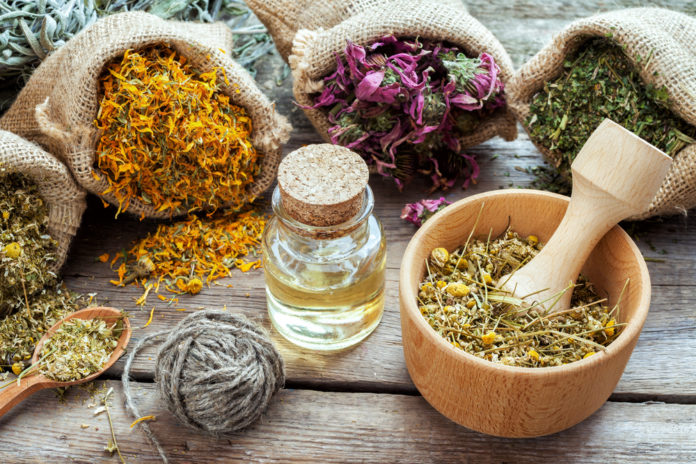 Aspirin comes from Spiraea, a biological genus of shrub containing it’s key and active ingredient, salicylic acid. Aspirin was first derived from the the willow bark during the time of Hippocrates, when individuals chewed the bark to reduce fever and inflammation. Fast forward to traditional medicine, aspirin is recognized as the first non-steroidal anti-inflammatory drug (NSAID) and sold as over-the-counter tablets. The NSAID continues to be used to reduce fever and relieve mild to moderate body pain, including headaches, muscle aches, and toothaches, along with showing effectiveness in reducing the risk of blood clots, heart attacks, and strokes.ASPIRIN USES AND SIDE EFFECTS
Aspirin comes from Spiraea, a biological genus of shrub containing it’s key and active ingredient, salicylic acid. Aspirin was first derived from the the willow bark during the time of Hippocrates, when individuals chewed the bark to reduce fever and inflammation. Fast forward to traditional medicine, aspirin is recognized as the first non-steroidal anti-inflammatory drug (NSAID) and sold as over-the-counter tablets. The NSAID continues to be used to reduce fever and relieve mild to moderate body pain, including headaches, muscle aches, and toothaches, along with showing effectiveness in reducing the risk of blood clots, heart attacks, and strokes.ASPIRIN USES AND SIDE EFFECTS
According to WebMD, aspirin side effects include upset stomach and heartburn. Although people less often experience serious side effects, aspirin may also cause easy bruising and bleeding, hearing difficulties and ringing of the ears, persistent or severe nausea and vomiting, unexplained tiredness and dizziness, changes in urine output and color, and bleeding of the stomach, intestine, and other areas of the body. Aspirin also interacts with other drugs, including warfarin, methotrexate, and certain types of antidepressants. Nonetheless, there are eight natural aspirin substitutes to lower the risk of such consequences.1. Anti-Inflammatory Diet8 NATURAL ASPIRIN ALTERNATIVES
An anti-inflammation or inflammatory diet is essentially an eating pattern intended to reduce inflammation in the body. And while inflammation is a normal body process of self-defense, too many inflammatory responses can reap havoc and even pose the risk of several chronic diseases. There are numerous causes of inflammation, including external triggers such as bacteria and viruses and ingested food sources. Combat and reduce inflammation by filling the diet with anti-inflammatory foods, including avocadoes, berries, cruciferous veggies, leafy greens, and nuts.
2. Heart Healthy Diet
Low-dose aspirin is often recommended to prevent heart attacks and strokes, with approximately half of U.S. adults reporting regular aspirin use according to 2012 nationwide survey. While regular aspirin use is supported by the American Heart Association and the U.S. Preventative Task Force for people at high risk for or with a history of heart attacks or strokes, you can also eat for heart and overall health. Reduce highly processed products filled with added sugar and salt and increase whole foods such as whole grains, fresh fruits and veggies, lean and plant-based proteins, and healthy fat sources. And thanks to Balance by bistroMD, eating for a healthy heart has never tasted so good! From blackened chicken with creamy smoked paprika sauce to hickory smoked BBQ, find delicious and nutritious heart healthy meals here!
3. Omega-3 Fatty Acids
Omega-3 fatty acids have proven to reduce levels of inflammation in the body and are largely known for their role in cardiovascular health, along with showing promise in reducing feelings of anxiety and depression. Fatty fish (such as such as salmon, anchovies, herring, mackerel, tuna, and sardines) contain high amounts of the omega-3 fatty acids eicosapentaenoic acid (EPA) and docosahexaenoic acid (DHA), which offers anti-inflammatory effects to the body. Walnuts, olive and canola oils, flax and chia seeds are also valuable sources of omega-3.
4. Ginger
The ginger root or stem is often consumed fresh, dried, and in its oil or powdered form, with the pungent and spicy flavor often complementing Chinese cuisine. But ginger offers much more than a flavor profile to foods, as it also extends anti-inflammatory benefits well-known in alternative medicine. Evidence shows ginger can treat cardiovascular disorders such as atherosclerosis (hardening of the blood vessels) and hypertension (high blood pressure), along with easing pain related to exercise, menstrual periods, headaches, and various forms of arthritis.
5. Turmeric
From headaches to arthritis, consuming turmeric has been used to treat an extensive number of inflammatory diseases. Curcumin, the chemical providing the vibrant color of turmeric, is suggested to reduce inflammation and combat against infection. Turmeric may also improve circulation and prevent against blood clotting, while applying topically may manage skin pain and sores, ringworm, bruising, and wounds. Reap the benefits of the aspirin alternative with this nutrient-dense and flavor-packed turmeric milk recipe!
6. Frankincense Oil
Frankincense is the resin from Boswellia trees native to Arabia and India, granting pharmacological properties and clinical effectiveness. Boswellic acids found in Frankincense oil have shown reliability in treating a range of inflammatory condition, along with alleviating toothaches, mouth sores, and stress.
7. Chamomile
Whereas chamomile may not target inflammation instantly and directly, it can help mitigate an underlying cause: Stress. Ongoing and chronic stress has not only shown to lead to systemic inflammation of the body, but increase the risk of heart disease. While contemporarily utilized for its soothing and relaxing properties, sound research also indicates chamomilecan calm nerves.
8. Lavender
Lavender works similar to chamomile, showing to reduce anxiety, restlessness, and nervousness. The aspirin alternative has also shown to be as effective as medication, further reducing the worry of drug dependence.
8 Natural Aspirin Alternatives | On The Table (mybalancemeals.com)
If you're gonna fight, fight like you're the third monkey on the ramp to Noah's Ark... and brother its starting to rain. Join our efforts to Secure America's Borders and End Illegal Immigration by Joining ALIPAC's E-Mail Alerts network (CLICK HERE)
-
11-01-2023, 03:01 AM #383
Dandelion Root Able To Kill 98% Of Cancer Cells (Video)
Tim Brown / October 31, 2023

Florida Homeowners With Damage May Want To Read This
Daily Home Digest
Have you ever had dried, roasted dandelion root tea? I have to say that it is not only great for our digestion system, but according to some, dandelion works to kill 98% of cancer cells and that means it’s not a huge money maker for doctors and, of course, Big Pharma. Yet, what our Creator has given us is always more powerful, safe and effective than anything Big Pharma can turn out. In fact, every thing Big Pharma turns out has adverse side effects, no matter what it is. That is not true with the Creation.
Before we get into the issue of dandelion root, I want to know if you are watching the biggest health series of the year. It’s called Healing Genesis and contains input from the likes of Dr. Bryan Ardis, Dr. Lee Merritt, Dr. Ed Group, Dr. Henry Ealy and many, many more who are looking back to the Creation for health solutions. You can check it out by clicking here.
I recently ran across a very informative article by Medeea Greere on Dandelion root that I wanted to share with my readers.
- Activate Your Own Stem Cells & Reverse The Aging Process - Choose "Select & Save" OR Join, Brand Partner & Select Silver To Get Wholesale Prices
- Get your Vitamin B17 & Get 10% Off With Promo Code TIM
- How To Protect Yourself From 5G, EMF & RF Radiation
- Protect Your Income & Retirement Assets With Gold & Silver
- Grab This Bucket Of Heirloom Seeds & Get Free Shipping With Promo Code TIM
- Here’s A Way You Can Stockpile Food For The Future
- Stockpile Your Ammo & Save $15 On Your First Order
- Preparing Also Means Detoxifying – Here’s One Simple Way To Detoxify
Greere writes:
Dandelion root, dandelion greens as well as dandelion tea is loaded with nutrients and boast a variety of benefits for our health.
Background
Dandelions, also known as Taraxacum officinale, are a type of flowering plant native to Europe, Asia and North America. The origins of dandelion as a natural remedy can be traced all the way back to 659 B.C. in ancient China. It was also used in Arabic, Welsh and European medicine and was eaten raw or made into a juice or tonic.
Traditional uses of the dandelion ranged from promoting better digestion to healing the liver. Some Native American tribes chewed on dandelion root to relieve pain while others steamed the leaves and applied topically to ease sore throats.
Nevertheless, the benefits of dandelion extend way beyond the root. In fact, dandelion leaves, seeds and flowers can all be used in a variety of recipes and each boast a unique set of nutrients and health-promoting properties.

Nutritional contents
Dandelion is rich in many nutrients yet low in calories. it contains a good amount of fiber as well as vitamin K, vitamin A and vitamin C.
One cup of chopped dandelion greens (55 grams) contains approximately:
- 24.7 calories
- 5.1 grams carbohydrates
- 1.5 grams protein
- 0.4 gram fat
- 1.9 grams fiber
- 428 micrograms vitamin K (535 percent Daily Value (DV)
- 5,588 international units vitamin A (112 percent DV)
- 19.3 milligrams vitamin C (32 percent DV)
- 103 milligrams calcium (10 percent DV)
- 1.7 milligrams iron (9 percent DV)
- 1.9 milligrams vitamin E (9 percent DV)
- 0.2 milligram manganese (9 percent DV)

Dandelion greens also contain a small amount of thiamine, riboflavin, niacin, vitamin B6, folate, magnesium, phosphorus, potassium, zinc and copper.
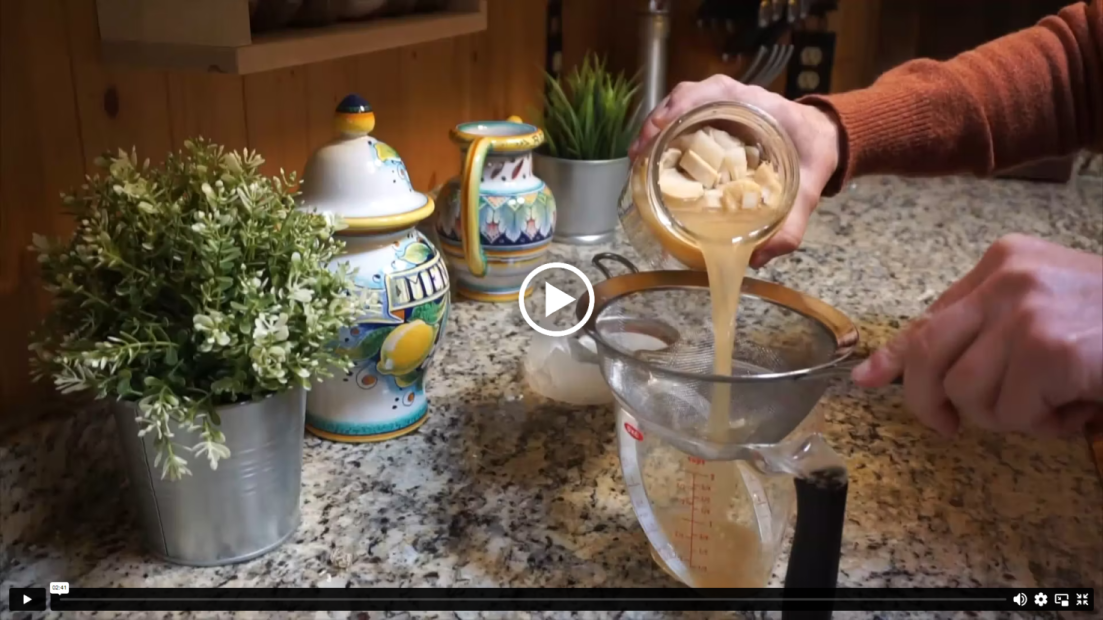 BRAND NEW! The Most Powerful Remedies We Lost to HistoryScientific Studies on Dandelion Benefits – Wade off Cancer Cells
BRAND NEW! The Most Powerful Remedies We Lost to HistoryScientific Studies on Dandelion Benefits – Wade off Cancer Cells
Scientists from Canada Discovered a Plant That Kills Cancer Cells in 48 Hours. At the University of Windsor in Canada a research was conducted at the Department of Chemistry and Biochemistry, and the results can give hope to cancer patients.
Dandelion tea acts on the affected cancer cells in a way that they disintegrate within 48 hours, during which time no new healthy cells in the body get affected. This often neglected plant is considered to be weed, but has many healing properties and it must be clean when collected, away from the roads and pollution.
While our grandmothers used to prepare syrups of dandelion flowers knowing that contains many curative substances, what they did not know for sure was the fact that dandelion root may help cancer patients. Scientists have found that the root of this plant appears to be “better” than chemotherapy because it “kills” all the cells, and dandelion root only ones affected by cancer.
In addition it has diuretic properties, stimulates the secretion of the bile, cleanses the liver, helps with allergies and reduces cholesterol. It contains very important vitamins and minerals such as vitamin B6, thiamin, riboflavin, vitamin C, iron, calcium, potassium, folic acid and magnesium.
It contains up to 53% of the required daily intake of vitamin K and about 110% of the recommended daily intake of vitamin A. These facts about this plant are known for years. But recent studies have shed a new light on the dandelion.
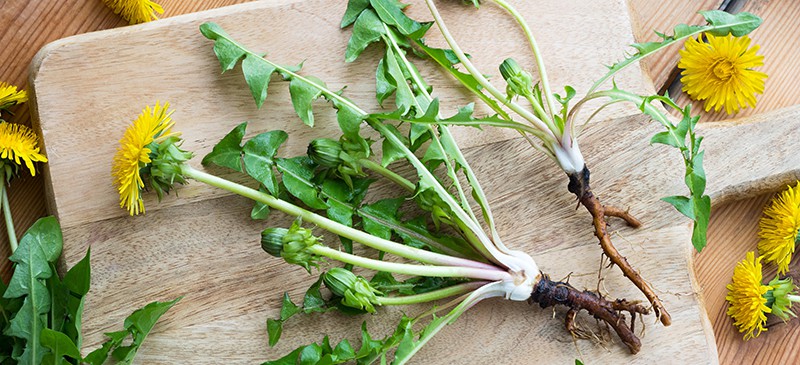
How to pick the dandelion root?
Dandelion root is harvested in autumn or spring, when all the energy is contained in the root. Dandelion, that is dandelion root should be pulled out from the ground. Use a small trowel to dig, and gently remove the earth around the root. Make sure that the root remains intact, not to lose the healing fluid that is hidden in it.
Remove the root to a clean place that is not treated with various chemicals, and while you remove the root focus your energy on large and powerful plants.
How to store the dandelion root?
As a remedy, dandelion root is used fresh and dried. If we want to keep dandelion root it needs to be dried. Before drying, the root should be carefully peeled and cut into equal, smaller pieces. After that, the dried dandelion root should be kept in a fresh air. Spread the dandelion root on a surface, in a cool dry place with good ventilation.
The root will be dried in a period of 3 to 14 days, and you’ll notice when dried becomes brittle under the fingers. In this way dried dandelion root contains medicinal properties up to a year, and should be stored in a glass jars in a cool, dark place.
 Why You Should Put Garlic in Your Ear Before Going to SleepDetox Liver
Why You Should Put Garlic in Your Ear Before Going to SleepDetox Liver
According to Axe, (2021) vitamins and nutrients in dandelions cleanse our livers and keep them working properly. Dandelions aid our digestive system by maintaining the proper flow of bile. One study by Davaatseren et al., (2013) supports the idea that dandelion tea or stems are also good vitamin C foods, and may help with mineral absorption, reducing inflammation and preventing the development of disease.

Natural Coffee Substitute
The roots of young dandelion plants are roasted to a dark brown color. Then, after steeping in hot water and straining, it can be enjoyed as a coffee substitute »» The Natural Way: Introducing Java Burn – Weight Loss With Black Coffee (secret recipe )
Fights Cholesterol
Some of the bioactive compounds in dandelion may lower cholesterol, which may decrease heart disease risk. One animal study by Davaatseren et al .,(2013) significantly reduced cholesterol and triglyceride levels in mice that were treated with dandelion extract.
Another rabbit study by Choi et al.,(2010) examined the impact of adding dandelion roots and leaves to a high-cholesterol diet. Rabbits that received dandelion had noticeably reduced cholesterol levels. Though these outcomes are intriguing, more research is needed to determine dandelion’s potential effects on cholesterol in humans.

Support Bones
Dandelions contain 10 percent of the recommended daily value of calcium in the body. Hence, just drinking dandelion tea or eating the greens, the body calcium need is sorted and could avert high blood pressure that may be caused by calcium deficiency.
High in Vitamin K
Dandelion is loaded with over 500 percent of the daily value of the body needs of Vitamin K. Vitamin K is an essential fat-soluble vitamin and is significant in bone and heart health. Vitamin K is the major vitamin needed in bone mineralization and blood clotting — in actual fact, vitamin K builds bones better than calcium! And it helps maintain brain function and a healthy metabolism.
For instance, one study by Adams and Pepping (2005), demonstrates that vitamin K can improve bone health and reduce the risk of bone fractures, especially in postmenopausal women who are at risk for osteoporosis. Vitamin K also supports menstrual bleeding because of its blood-clotting abilities.
One study by Juanola-Falgarona et al., (2014) which involved over 7,000 respondents demonstrates vitamin K ability to reduce the risk of cancer and cardiovascular mortality.
Weight Loss
Zhang et al.,2008 study confirmed that dandelion could have similar effects on the body as the weight loss drug Orlistat, which works by inhibiting pancreatic lipase, an enzyme released during digestion to break down fat. Testing the impact of dandelion extract in mice revealed similar results, prompting researchers to recommend further study on the possible anti-obesity effects of dandelion.
► REFERENCE: Okinawa Flat Belly Tonic. This Secret Ancient Japanese Tonic Recipe Will Help You Melts 54 LBS Of Fat. Watch the video below:
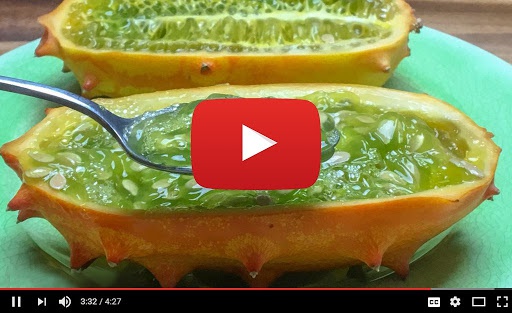
Diabetes Supports
Dandelion tea and juice help people with diabetes by stimulating the production of insulin from the pancreas and keeping blood sugar levels low. dandelion tea also supports the body remove excess sugar that’s stored in the body — because it’s a diuretic.
One study by Wirngo et al., (2016) confirmed that the anti-diabetic properties of dandelion are credited to bioactive chemical machineries, including chicoric acid and sesquiterpene lactones. They noted that it has also been used for diabetes because of its anti-hyperglycemic, antioxidative and anti-inflammatory properties.
Dermatological Health
Christine Ruggeri, (2019), notes that, the milky white substance that is seen on the fingers when one breaks a dandelion stem is actually great for the skin! The sap of a dandelion stem is highly alkaline, and it has germicidal, insecticidal and fungicidal properties. The author is of the view that, the sap can be used to relieve itching or irritation from eczema, ringworm, psoriasis and other skin infections. This assertion was confirmed by one study by Yang & Li, (2015) that dandelion leaf and flower extracts have been found to serve as potent protective agents against UVB damage and absorption.

Antioxidants
One study by Choi et al., (2010) demonstrates that antioxidants are substances that help prevent certain types of cell damage, especially those caused by oxidation. Drinking dandelion tea may help the body avoid cell damage from free radicals. One study by Chatterjee et al., (2011) found that dandelion root extract was effective in killing different cancers as a result of its free radical-fighting abilities.

Fiber
Dandelion tea and greens are high-fiber foods, making them a beneficial aid for digestion and intestinal health. One study by Anderson et al., (2009) agrees that high-fiber diets also reduce the risk of obesity, heart disease and diabetes, digestive problems, kidney stones and obesity as well as the power to lower the risk of some cancers.
Vitamin A
Dawson (2000) is of the view that dietary vitamin A supports antioxidants that prevent carcinogenesis by decreasing the levels of the free radicals that cause DNA damage. A cup of dandelion greens has over 100 percent of the daily value of vitamin A, hence, one can fight premature aging, respiratory infections and vision impairment with just a mug of dandelion tea.
Additionally, Vitamin A also gives immune support, promotes skin health and helps prevent cancer. For women who are pregnant, getting enough vitamin A is very important, especially during the third trimester.
Diuretic
Clare et al., (2008 study demonstrates that dandelion root has a natural diuretic effect, aiding the liver to rapidly eliminate toxins. Because dandelion helps reduce uric acid and stimulates urine production, it’s beneficial for fighting bacterial infections within the digestive tract and reproductive organs.
Urinary Tract Infections
Clare et al., (2008 study confirmed that dandelion tea can help prevent urinary tract infections, as well as bladder disorders, kidney problems and possibly even cysts on reproductive organs due, in to its diuretic properties.
For effectiveness against UTIs, Levy (2021) recommends that dandelion root should be combined with another leaf extracts called uva ursi to helps reduce the number of UTIs in women. The author notes: “In this combination, uva ursi is used because it kills bacteria, and dandelion is used because of its ability to increase urine flow and fight infection”.
Side effects
Christine Ruggeri, (2019) notes:
- Dandelion tea should be avoided in those taking antibiotics or allergic to dandelion.
- Those allergic to ragweed and related plants (like daisies, chrysanthemums, marigolds), are likely to be allergic to dandelion.
- Dandelions can cause allergic reactions when taken by mouth or applied to the skin of sensitive people.
- Dandelion might decrease how much antibiotics the body absorbs. This means that taking dandelion along with antibiotics might decrease the effectiveness of some antibiotics.
- Some antibiotics that might interact with dandelion include ciprofloxacin, enoxacin, norfloxacin, sparfloxacin, trovafloxacin and grepafloxacin.
- Taking dandelion might decrease how well the body gets rid of lithium because of its diuretic properties. This could increase how much lithium is in the body and result in serious side effects.
- There is also potassium in some diuretic pills, so be careful when taking these “water pills” because you don’t want too much lithium or potassium in the body.
- Dandelion might decrease how quickly the liver breaks down some medications. Before taking dandelion, talk to your health care provider if you take any medications that are changed by the liver. Some of these types of medications include amitriptyline, haloperidol, ondansetron, propranolol, theophylline and verapamil.

Dosage and Supplement Forms
According to Healthline.com, dandelion leaves, stems and flowers are often taken in their natural state and can be eaten cooked or raw. Dandelion is also available in supplemental forms, such as capsules, extracts and tinctures.
Currently, there are no clear dosage guidelines, as very little human research has been conducted on dandelion as a supplement. The following are recommended:
- Fresh leaves: 4–10 grams, daily.
- Dried leaves: 4–10 grams, daily.
- Leaf tincture: 0.4–1 teaspoon (2–5 ml), three times a day.
- Fresh leaf juice: 1 teaspoon (5 ml), twice daily.
- Fluid extract: 1–2 teaspoon (5–10 ml), daily.
- Fresh roots: 2–8 grams, daily.
- Dried powder: 250–1,000 mg, four times a day.
Take Home
- Dandelion supports the health of your bones, digestion, liver, urinary tract and skin. It’s rich in nutrients, including fiber, antioxidants, vitamin A and vitamin K.
- Dandelions have the potential to provide some therapeutic health benefits. However, research on specific applications for dandelion is lacking, especially in human studies.
The writer is on a mission to provide you and your family with the highest quality nutrition tips, scientific herbs and healthy recipes in the world.
ALSO : Old Secret Recipe of Dandelion Syrup that Can Cleanse Your Blood and Remove Liver Disease & Fatigue
DISCLAIMER: This post is for enlightenment purposes only and should not be used as a replacement for professional diagnosis and treatments. Remember to always consult your healthcare provider before making any health-related decisions or for counselling, guidance and treatment about a specific medical condition.
Dandelion Root Able To Kill 98% Of Cancer Cells (Video) - The Washington StandardIf you're gonna fight, fight like you're the third monkey on the ramp to Noah's Ark... and brother its starting to rain. Join our efforts to Secure America's Borders and End Illegal Immigration by Joining ALIPAC's E-Mail Alerts network (CLICK HERE)
-
11-01-2023, 04:30 AM #384
Comfort Food for a Vintage Menu Madness
WEDNESDAY, 1 NOVEMBER 2023
Here I am with another Vintage Menu Madness Post. Once a week I like to cook and share a full menu from one of my Vintage Cookbooks. This weeks menu is true Comfort Food and something which I remember my mother making us on occasion when I was growing up!
The star of the menu is Swiss Steak. Tender and delicious with a lush tomato and onion gravy. So tender it melts in the mouth. We were always really happy when Swiss Steak appeared on our dinner table and it was something I used to make for my own family as well!
The recipes for this week's menu come from the Betty Crocker's Picture Cook Book. Sadly it is not an original print of the book which was first published in 1950, but it is a reprint. My budget doesn't quite run to an original copy but this one is supposed to be exactly the same as the original one.
I bought my copy on Amazon. And it is brand new.
Betty Crocker has never been a real person, but rather a fictional character developed by the Washburn Crosby Milling Company back in 1921, supposedly a home economist who answered cooling questions and shared recipes. She has had many makeovers through the years, presenting the public with the ideal physical image of a valued Home Maker. A brunette and always dressed in red and white it seems!
I have had a number of Betty Crocker Cookbooks through the years and have always found the recipes to be entirely reliable and trustworthy. These recipes and products have always kept my family very happy!
Todays menu was a Comfort Food Menu in keeping with the cooling autumnal temperatures. All of the recipes used came from the pages of this cookbook and consisted of:
SWISS STEAKThis was a menu that really appealed to my nostalgic comfort food loving soul. I picked the recipe for the main dish first and then chose the accompaniments to go with it, as I said, all recipes coming from this cookbook.
All of the recipes were chosen with easy and comfort in mind. My oven also had stopped working (burnt out element) and so they also were recipes that I could easily cook on the top of the stove.
Swiss steak has always been a real favorite with me and mine. It uses a cheaper cut of meat. I did take the luxury of cutting the recipe in two for myself so I was not left with a whole lot of leftovers, but I am giving the full amounts as written in the original recipe.
What you have here is a cheaper cut of meat which is pounded, seasoned, floured and browned and then simmered until it falls apart in a tasty tomato and onion gravy. You can add other seasonings and herbs as you with, but at its very basic, this has always been one very delicious meat dish.
Yield: 4 - 6907g people (generously)
Author: Marie Rayner
Print
Swiss Steak
Prep Time: 15 MinCook Time: 2 H & 30 MTotal Time: 2 H & 45 M
Tender melt in the mouth pieces of beef in a tasty tomato and onion gravy.
INGREDIENTS
- 1 (2 pound/907g) round or flank steak, cut 1 1/2 inch thick
- salt and pepper to taste
- 6 TBS plain all purpose flour
- 2 cups (450g) tinned stewed tomatoes
- 1 medium onion, peeled and thinly sliced
- 1 stalk of celery, trimmed, washed and diced
- a bit of butter or oil to fry
INSTRUCTIONS
- Cut your beef steak into serving sized pieces. Season to taste with salt and pepper and dust generously with flour. Pound the flour into the meat using the dull edge of a heavy knife until the steak cannot absorb any more flour.
- Heat a bit of oil or butter in a heavy bottomed skillet over moderate heat until hot. Add the pieces of steak (you may need to work in batches). Brown the meat generously on both sides in the hot fat.
- Scatter the onion slices and celery over top of the browned meat and then pour the tomatoes over all.
- Cover tightly and cook over low heat for 2 to 2 1/2 hours until the meat is very tender. Uncover during the last half hour of cooking to reduce the gravy and thicken it. Serve hot.
Tag @marierayner5530 on instagram and hashtag it #TheEnglishKitchen
You could of course serve something other than potatoes as a side dish to the steak, but in my family this meal was always accompanied with a hot fluffy pile of mash. Rice would also go very well as would noodles.
We are mashed potato lovers in my family. When the children were growing up I used to have to make a huge pot of them every time we were having them. With three hungry boys (not so much the girls) and a hungry husband that was a LOT of potatoes. Each of my boys would vie to wear the crown of the "Mashed Potato King" and outdo the others in their consumption of them. I guess I must have made good mash! Betty Crocker does too!
Yield: 4 servings
Author: Marie Rayner
Fluffy Mashed Potatoes
Prep Time: 5 MinCook Time: 20 Min
Total Time: 25 Min
Check out the notes to see some handy tips for mashed potatoes!
INGREDIENTS
- 8 medium to large sized floury/mealy type of potatoes (a Russet, Yukon Gold. Albert Bartlett or Maris Piper, King Edward)
- salt and pepper to taste
- 1/2 cup (120ml) warm milk
- 1/4 cup (60g) butter
INSTRUCTIONS
- Wash and peel the potatoes. Cut into quarters and then place into a saucepan of lightly salted boiling water to cover.
- Keep the water boiling and cook until the potatoes are fork tender, but not mushy. (about 15 to 20 minutes.) Drain well and then return to the pan. Shake the pan over the residual heat of the burner to dry them out a bit.
- Mash the potatoes thoroughly using a potato masher. Season with salt and black (or white) pepper to taste.
- Beat in the butter and the milk until nice and fluffy. Serve hot.
NOTES
Pare the potatoes just prior to cooking. Do not soak if you can help it as valuable minerals and vitamins escape in soaking. Keep your water boiling the whole time they are cooking.
To keep Mashed potatoes hot: Cover and place the pan in a skillet of hot water. To keep fluffy add a pinch of baking powder.
Tag @marierayner5530 on instagram and hashtag it #TheEnglishKitchen
I chose to serve buttered peas and carrots on the side. I love this timeless combination and it does add a nice spark of color to the plate.
To prepare the carrots peel and then cut them into 2 1/2 inch lengths. I would plan on one largish carrot for every two people. Cut the lengths into quarters and then place the carrots into a pan of water to which you have added 1/2 tsp of sugar.
Bring to the boil and then cook for about 10 to 15 minutes until crispy tender. Add 1 cup (142g) of frozen baby peas, bring just back to the boil and then drain well. (This keeps the peas from over cooking and preserves their color.)
Toss together with a knob of butter and season lightly with some salt and black pepper.
For a larger family I would serve a nice whole wheat bread with some softened butter on the side and of course, I always like to serve pickles of some sort with a meal like this as my mother did before me.
Here in Canada you can get lovely sweet mixed pickles, or if you are lucky enough you can serve some nice homemade pickles. Today I served Pickled Mustard Beans. As there is only me, I did skip the bread and butter.
As this was quite a hearty meal I wanted to serve a light-ish dessert. I had picked up some delicious apples at the local farm market one day when I was there with my sister.
They were called sweet tart apples and when cut open revealed a beautiful pink flesh inside. I though these would make the prettiest apple sauce and I was right.
These were nice and tart to the taste and worked beautifully as apple sauce. You need a nice tart apple for cooking. They also broke down really well in the cooking process.
The end result was one of the most beautiful apple sauces I have ever seen or made. It also tasted beautiful. I am in love with these apples!
I served the apple sauce well chilled with a cheeky dollop of whipped cream on top for the win! I did make a bit pot so that I could freeze some to enjoy later on in the year.
This recipe is attributed to Mrs. Peter Larson of Webster, Wisconsin in the cookbook. I am not sure if she is still alive but I can tell you, she made very good apple sauce!
Yield: 4
Author: Marie Rayner
Print
Apple Sauce (the thick type)
This is a delicious apple sauce with a beautiful thick texture. Delicious served cold with whipped cream or a cheeky scoop of vanilla ice cream.
Prep Time: 10 Min
Cook Time: 16 Min
Total Time: 26 Min
INGREDIENTS
- 8 tart cooking apples
- 1 cup (240ml) water
- 1/2 cup (100g) granulated
- dash salt
- 1 tsp fresh lemon juice
- 1/8 tsp cinnamon or nutmeg
- 1/8 tsp of finely grated lemon rind (optional, I left this out)
INSTRUCTIONS
- Wash, pare, core and slice the apples into eights.
- Place into the saucepan along with the water, lemon juice, and sugar. Bring to the boil and then simmer over medium low heat until the apples are very tender. (About 15 minutes.)
- Stir in the salt and nutmeg or cinnamon and lemon zest if using. Taste and add more sugar if necessary. (Some apples are more tart than others.) Cook for a minute longer.
- Beat with a fork until nice and fluffy. Serve cold, topped with whipped cream or ice cream if desired.
Tag @marierayner5530 on instagram and hashtag it #TheEnglishKitchen
And there you have it. My Vintage Menu for this week and shared with you on the first day of November. Happy November. We have so much deliciousness to look forward to this month! Our November taste adventure is just beginning! I do hope that you are enjoying these Vintage Menus and Recipes as much as I am!
This content (written and photography) is the sole property of The English Kitchen. Any reposting or misuse is not permitted. If you are reading this elsewhere, please know that it is stolen content and you may report it to me at: mariealicejoan@aol.com
Thanks so much for visiting! Do come again!
Follow my blog with Bloglovin
Recommended
DELICIOUS MAINS DESSERTS FABULOUS SIDES MEAT AND POTATOES VINTAG
Comfort Food for a Vintage Menu Madness | The English Kitchen
If you're gonna fight, fight like you're the third monkey on the ramp to Noah's Ark... and brother its starting to rain. Join our efforts to Secure America's Borders and End Illegal Immigration by Joining ALIPAC's E-Mail Alerts network (CLICK HERE)
-
11-04-2023, 07:44 PM #385If you're gonna fight, fight like you're the third monkey on the ramp to Noah's Ark... and brother its starting to rain. Join our efforts to Secure America's Borders and End Illegal Immigration by Joining ALIPAC's E-Mail Alerts network (CLICK HERE)
-
11-06-2023, 06:13 AM #386
Improve your heart health with THIS surprisingly simple method
by: Patrick Tims, staff writer | November 6, 2023
 (NaturalHealth365) The age-old adage “you are what you eat” is undoubtedly rooted in truth, as diet plays a pivotal role in health. Coupled with regular exercise, a balanced (organic) diet has long been considered the dynamic duo of cardiovascular well-being. But what if there was another, often underestimated, element in the quest for a healthier heart?
(NaturalHealth365) The age-old adage “you are what you eat” is undoubtedly rooted in truth, as diet plays a pivotal role in health. Coupled with regular exercise, a balanced (organic) diet has long been considered the dynamic duo of cardiovascular well-being. But what if there was another, often underestimated, element in the quest for a healthier heart?
Findings from a recent study show that heightened self-awareness, cultivated through mindfulness, significantly influences our dietary choices and, consequently, the state of our cardiovascular system. So, let’s explore this captivating connection between mindfulness and heart health. Beyond the treadmill and salad bowl, there’s a path of self-discovery that may hold the key to a healthier, happier heart.
How mindfulness uplifts cardiovascular health
If you have a family history of heart problems or have had heart issues in the past, you might feel somewhat powerless. But, as many holistic healthcare providers will say, we should not let our past define who we are or what we can become. Intriguingly, recent findings from the aforementioned study published in JAMA Network Open suggest that we may hold more power over our heart health than we think.
Over eight weeks, this study delved into the profound impact of mindfulness on our overall well-being, particularly our cardiovascular health. The results, quite simply, were remarkable.
What did the researchers find? Self-awareness is pivotal in how we eat and whether we stay faithful to a heart-healthy diet. Those who embrace mindfulness cultivate greater self-awareness, strengthening their ability to adhere to a heart-healthy eating regimen.
Master the art of mindfulness for a healthier heart
Mindfulness is a beautiful practice offering a host of life-enhancing benefits. Here are some simple tips to help you get started and stay on track.
1. Start with small steps
Kick off your mindfulness practice with a manageable commitment of at least five minutes daily. Just like building a muscle, your mindfulness requires regular exercise to strengthen. Each week, gradually extend the duration of your mindfulness sessions.
2. Gradual progress
As you build your mindfulness “muscle,” aim to increase the duration of your sessions over time. Work your way up to 20-minute mindfulness sessions, ideally five days a week. It’s perfectly acceptable to enlist the support of a family member or a reminder device to help you stay on track, especially when you’re just starting.
3. Create a tranquil environment
Select a quiet and comfortable space that allows you to maintain good posture. Sit comfortably and close your eyes. Focus your attention solely on the sensation of your breath. Let go of intrusive thoughts, keeping your attention on the physical experience of breathing.
4. Mindfulness beyond meditation
Remember that mindfulness isn’t limited to meditation alone. Incorporate mindfulness into daily activities like walking, gardening, or savoring a meal. Consider journaling to reflect on your experiences, express your feelings, and reduce stress. To increase the effectiveness of this practice, visualize (very specifically) outcomes in your life. In other words, see yourself with all the things you want in your life … great mental, emotional and physical health. Feel what that’s like in the present tense for optimal results.
5. Guided imagery
Explore guided imagery as a means of stress relief. Guided imagery uses words or soothing music to create a positive and desired outcome. It can shift your focus to specific sensory experiences, such as textures, sounds, or visuals, promoting relaxation.
Make an effort to practice mindfulness at the same time each day to establish a routine. With time and dedication, mindfulness will become a natural and beneficial part of your daily life, promoting self-awareness and contributing to improved heart health.
Sources for this article include:
JAMAnetwork.com
Medicalxpress.com
Heart Health Improved With THIS Easy Practice | NaturalHealth365
If you're gonna fight, fight like you're the third monkey on the ramp to Noah's Ark... and brother its starting to rain. Join our efforts to Secure America's Borders and End Illegal Immigration by Joining ALIPAC's E-Mail Alerts network (CLICK HERE)
-
11-07-2023, 01:43 PM #387

Doctors are causing Alzheimer's disease.
DOCTORS ARE CAUSING ALZHEIMER'S DISEASE.

Jim Crenshaw
If you're gonna fight, fight like you're the third monkey on the ramp to Noah's Ark... and brother its starting to rain. Join our efforts to Secure America's Borders and End Illegal Immigration by Joining ALIPAC's E-Mail Alerts network (CLICK HERE)
-
11-08-2023, 03:18 AM #388
How to Make the Most Powerful Natural Antibiotic
Tuesday, November 7, 2023 10:51
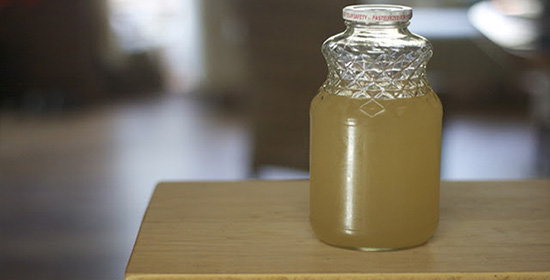
by CLAUDE NELSON
Herbal tinctures are typically an alcoholic extract of plant or animal material. One of the best solvents you can find in any home is VINEGAR. Being acidic is a better solvent for obtaining alkaloids then most of industrial products.
The general method of preparation (herbal tinctures) is really simple: the herbs are put in a container (a jar), the vinegar is added and then the jar is left to stand for 2–3 weeks and shaken occasionally in order to maximize extraction.
Here is an amazing antibiotic, antiviral, vermifuge, anti-fungal (and a lot of other health benefits as listed below):
You’ll need:
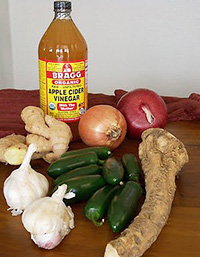 1. Apple Cider Vinegar contains Malic Acid which is an antifungal, antibacterial, antiviral, and also supports energy production which increases mental and muscle functioning. It strengthens the immune system and regulates the acid/alkaline balance.
1. Apple Cider Vinegar contains Malic Acid which is an antifungal, antibacterial, antiviral, and also supports energy production which increases mental and muscle functioning. It strengthens the immune system and regulates the acid/alkaline balance.
It also aids the digestive tract- if the apple cider is organic and unfiltered (see: How to make Apple Cider Vinegar at Home – easy) it will contain small amounts of ‘mother’ colony (bacteria and yeast) which is an amazing probiotic. More so, it is known to reduce cholesterol and blood glucose levels.
2. Fresh Hot Peppers contain capsaicin (The hotter the chili, the more capsaicin) a substance known for keeping immature fat cells from developing into full-fledged ones (Burns off FAT cells) and for boosting metabolism. It also contains Vitamin C (helps the immune system) and a wide range of B Vitamins. A study in the British Journal of Nutrition showed that adding hot chilis to daily meals protects against cholesterol (forming) in the blood.
3. Garlic contains allicin, an antibiotic and anti-fungal compound that protects it against pests. Allicin helps treating sore throats, colds, flu, poor digestion and it is a potent antiseptic and antimicrobial agent effective against many types of infection. Above all, it really helps your immune system and you won’t be caching colds that easy. (see: How to make Medicinal Pickled Garlic)
4. White Onions contains Quercetin (just like Allicin for Garlic), a substance known for its health benefits. Quercetin is an effective anti-inflammatory agent (study in the journal International Archives of Allergy and Applied Immunology). Quercetin has been found to relax the airway muscles and may provide a relief when caching a cold (or for asthma symptoms). It also acts as an antioxidant, protecting the body against free radicals and boosting your immune system.
5. Ginger has a long tradition of being very effective in alleviating symptoms of gastrointestinal distress. In herbal medicine, ginger is regarded as an excellent carminative (a substance which promotes the elimination of intestinal gas) and intestinal spasmolytic (a substance which relaxes and soothes the intestinal tract). Modern scientific research has revealed that ginger possesses numerous therapeutic properties including antioxidant effects, an ability to inhibit the formation of inflammatory compounds, and direct anti-inflammatory effects.
6. “Horseradish Root juice or sauce (extracted from horseradish root) has been used effectively to relieve sinus discomfort. The traditional treatment for sinusitis is to “take a half teaspoonful of grated horseradish sauce without dilution both morning and afternoon. Do not drink anything or eat for at least ten minutes after the dose. There will be a powerful feeling in the head, followed by a sensation of the sinuses clearing, sometimes accompanied with sweating and perhaps tearing.
Due to its antibiotic properties, horseradish can also be used to treat urinary tract infections (UTI) and destroy bacteria in the throat that can cause bronchitis, coughs and related problems. Additionally, horseradish stimulates the body to eliminate urine, so bacteria or other inflammatory agents in the bladder may be flushed out sooner than they normally would be eliminated.” (Source)
How to Extract the Tincture
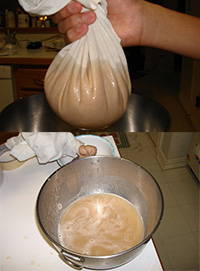 1. Peel and chop the Onions and the Garlic.
1. Peel and chop the Onions and the Garlic.
2. Grate the Ginger and the Horseradish Root
3. Toss the Onions, the Peppers and the Garlic into the blender or processor and wreak havoc!
4. Add all crumbled ingredients into one gallon jar and pour raw Apple Cider Vinegar until it’s fully filled.
5. Shake it every day for at least 2 weeks. The longer it stays in the jar the stronger the substance will be.
6. After at least 2 weeks, strain the substance. You can use a press or simply a gauze cloth.
7. Store the substance in small bottles in a dark place
You can start drinking it daily (two times a day). Mix it with honey if you find it to strong.
This recipe was inspired from The Lost Book of Remedies
The Pharmaceutical Industry almost made this knowledge obsolete. But in my opinion this knowledge should not be lost. We might need it when things go really bad. So please feel free to share or print this article and put it in your bug-out-bag or your SHTF survival kit. I decided to put all the information in one book that covers more than 800 plants, with photos, across the U.S. It’s called ”The Lost Book Of Herbal Remedies” Written in collaboration with my friend Dr. Nicole Apelian, who is a mother, a naturalist, a trainer in survival skills, and a Ph.D. holder. Her undergraduate education was in Biology at McGill University, and she continued her herbal studies. Her life was spent among one of the most ancient cultures of the world, the San Bushmen. For the past 20 years, Dr. Nicole has been dealing with her Multiple sclerosis by using natural remedies and medicinal plants she grows in her backyard. She has also survived 57 days all alone in the wild, which was later featured on a history TV channel. Her journey from a wheelchair to living the fullest life. Whenever she has any health issue like headache, body pain, fever, or infection, she turns towards her little backyard pharmacy. You can get your hardtop copy of the book HERE!

How to Make the Most Powerful Natural Antibiotic | Self-Sufficiency | Before It's News (beforeitsnews.com)If you're gonna fight, fight like you're the third monkey on the ramp to Noah's Ark... and brother its starting to rain. Join our efforts to Secure America's Borders and End Illegal Immigration by Joining ALIPAC's E-Mail Alerts network (CLICK HERE)
-
11-08-2023, 10:09 PM #389
How to keep your brain healthy and sharp as you age
11/07/2023 // Olivia Cook // 2.8K Views
Tags: aging secrets, alternative medicine, anti-aging, brain exercises, brain function, brain health, cognitive function, cognitive health, fitness, healing arts, health science, how-to, longevity, Mind, mind body science, natural health, natural medicine, relaxation, sleep, socializing, tips

Memory lapses, colloquially referred to as occasional "senior moments," can occur at any age. Evidence shows that aging alone is generally not a cause of cognitive decline.
Here are some science-proven ways to keep your brain healthy and sharp, and preserve your mental abilities as you get older.
Incorporate simple brain exercises into your daily life
Playing jigsaw puzzles can challenge multiple cognitive abilities. They require analytical thinking because you have to figure out how all the pieces fit together. They develop your cognitive flexibility as you switch attention between different puzzle pieces and between colors, images, shapes and different strategies.
They require concentration and patience, which can help improve focus and attention span. They help improve hand-eye coordination and fine motor skills (constructional praxis).
Check out Healthline's picks of games and puzzles to exercise your brain.
Use all your senses. A study published in the journal Frontiers in Neuroscience suggested that the more you use your sense of hearing, sight, smell, taste and touch, the more you're stimulating various parts of your brain at the same time. Try to bake and cook more at home or visit a farmer's market.
Make physical exercise a daily habit
Neuroscientist Dr. Ebony Glover said physical exercise generates neurotrophins within your central and peripheral nervous system. They are proteins critical for the development of new brain cells (neurogenesis) and the protection of new neurons and glial cells necessary for proper brain function.

Exercise can increase neuroprotection as well as the volume of brain structures, leading to overall improved cognition and health. (Related: Exercise preserves brain cells and prevents memory loss. )
Studies also show that dancing is good for the brain. It helps reduce stress, increases levels of the feel-good hormone serotonin and helps develop new neural connections, especially in regions of the brain involved in executive function, long-term memory and spatial recognition.
Eat smart
Experts say that what you eat can make a big difference in how well you think and remember things. A study published in the Journal of Clinical and Translational Research reported the effects of 21 nutrients and phytonutrients on cognitive function.
Significant effects on cognition include arousal, attention, comprehension, creative thinking, decrease in mental fatigue, memory recollection, mental flexibility, etc.
Check out Healthline's best foods to boost your brain and memory.
Learn to relax
Learn tai chi. Researchers in a recent study published in the journal Annals of Internal Medicine found that a modern twist added to tai chi, dubbed "meditation in motion," helps older adults improve their subtle problems with cognition – specifically their judgment, memory thinking and other mental abilities that may, in some cases, progress to dementia.
You can check out Lifeline’s simple guide to seven Tai chi exercises and forms.
Listen to or play music. Music can provide a total brain workout. You are never too young or too old to enjoy the benefits of music and your brain is capable of learning how to play music at any point in your life.
Get plenty of good quality sleep
Sleep has been proven by numerous studies to improve memory recall, reduce mental fatigue and regulate metabolism. When you sleep, your brain reorganizes and recharges itself and removes toxic waste byproducts, which have accumulated throughout the day
Socialize more
Connecting with family and friends, building social networks and participating in social activities are like exercises for your brain because they keep your mind agile; improve cognitive functions; stimulate attention and memory and help to strengthen neural networks.
Harvard Women's Health Watch reported on a study involving 12,000 participants, which found that the risk of dementia increased by as much as 40 percent in people who are isolated and lonely.
Use your brain
Your brain's health is an important piece of your overall health and well-being. It controls your ability to communicate, make decisions, solve problems and live a productive and useful life.
Engage in continuous learning, learn new skills and teach them to others, pick up a new hobby, read and write and so on because even though your brain cells are not muscle fibers, they also operate under the same principle – use it or lose it!
Visit BrainHealthBoost.com for more stories like this.
Watch the following video to learn simple steps you can take to keep your brain healthy and reduce your risk of cognitive decline.
This video is from the Daily Videos channel on Brighteon.com.
More related stories:
Gardening, art and more: 6 Home improvement projects that can help boost your mental health.
Aerobic exercise improves memory and brain power in older adults.
6 Natural ways to increase blood flow to your brain.
Sources include:
NCBI.NLM.NIH.gov 1
Healthline.com 1
NCBI.NLM.NIH.gov 2
Springer.com
BioMedCentral.com
NCBI.NLM.NIH.gov 3
Healthline.com 2
ACPJournals.com
Lifeline.ca
PubMed.NCBI.NLM.NIH.gov
NCBI.NLM.NIH.gov 4
Harvard.edu
Brighteon.com
How to keep your brain healthy and sharp as you age – NaturalNews.com
If you're gonna fight, fight like you're the third monkey on the ramp to Noah's Ark... and brother its starting to rain. Join our efforts to Secure America's Borders and End Illegal Immigration by Joining ALIPAC's E-Mail Alerts network (CLICK HERE)
-
11-08-2023, 10:11 PM #390
3:32
5 Good reasons to try Black Cumin Seed Oil
4:22
Health benefits of organic flaxseeds, a superfood packed with omega-3s
5:12
Support optimal brain and heart function with astaxanthin, the king of carotenoids
3:32
5 Good reasons to try Black Cumin Seed Oil
2:59
Support healthy blood sugar levels that are already within the normal range with Organic Pumpkin Seed
3:59
5 Health benefits of sweet and nutritious organic mangoes
3:23
Support optimal brain health with Organic Strawberries
If you're gonna fight, fight like you're the third monkey on the ramp to Noah's Ark... and brother its starting to rain. Join our efforts to Secure America's Borders and End Illegal Immigration by Joining ALIPAC's E-Mail Alerts network (CLICK HERE)
Similar Threads
-
Massachusetts Obamacare Site Tells Healthy People to Confirm Mental Diseases & Makes
By AirborneSapper7 in forum Other Topics News and IssuesReplies: 2Last Post: 11-12-2013, 04:41 AM -
Healthy Americans Health Insurance may Double, Even Triple When Obamacare Kicks In
By AirborneSapper7 in forum Other Topics News and IssuesReplies: 0Last Post: 07-01-2013, 11:48 PM -
CODEX NUTRITION COMMITTEE CHOOSES MALNUTRITION with sub-optimal nutrition
By AirborneSapper7 in forum Other Topics News and IssuesReplies: 0Last Post: 12-16-2012, 05:07 AM -
Try Parenting Instead Of Mental Health Screening
By PinestrawGuys in forum Other Topics News and IssuesReplies: 8Last Post: 02-08-2007, 04:37 PM -
Latino Diet Changes Deemed Health Crisi
By Charlesoakisland in forum illegal immigration News Stories & ReportsReplies: 12Last Post: 04-26-2005, 03:01 PM


 25Likes
25Likes LinkBack URL
LinkBack URL About LinkBacks
About LinkBacks





 Reply With Quote
Reply With Quote HOME
HOME



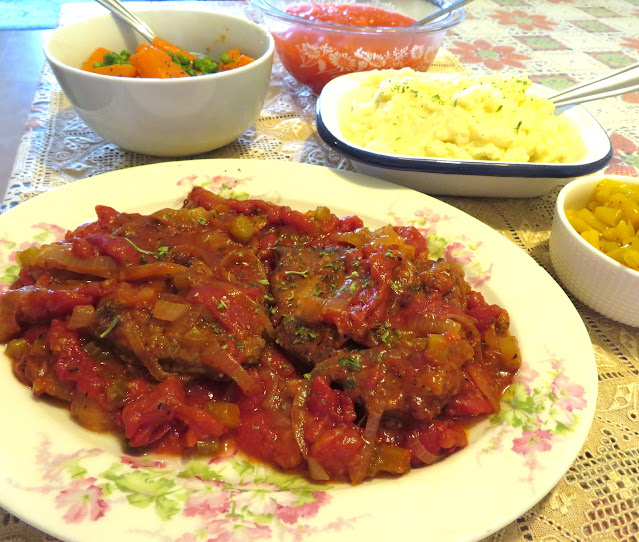


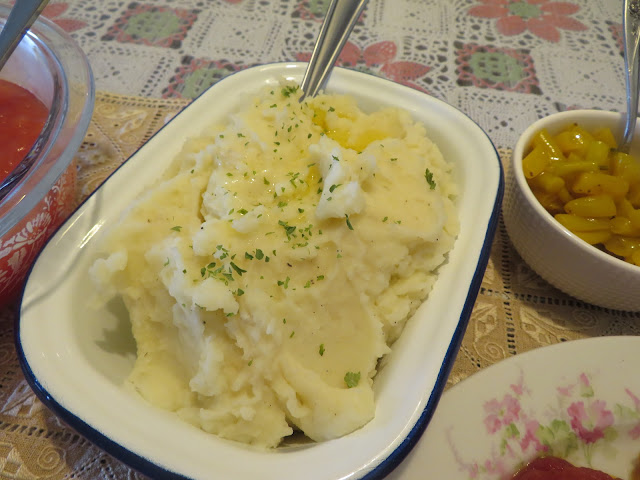
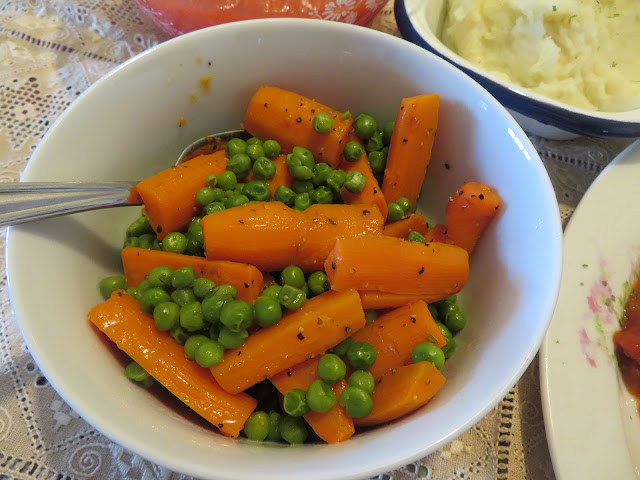

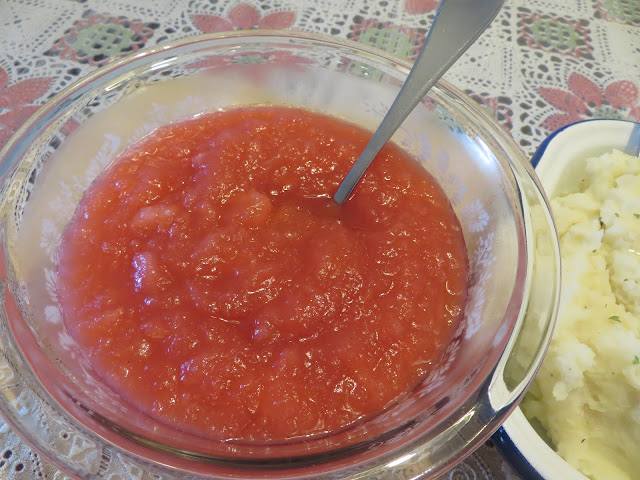
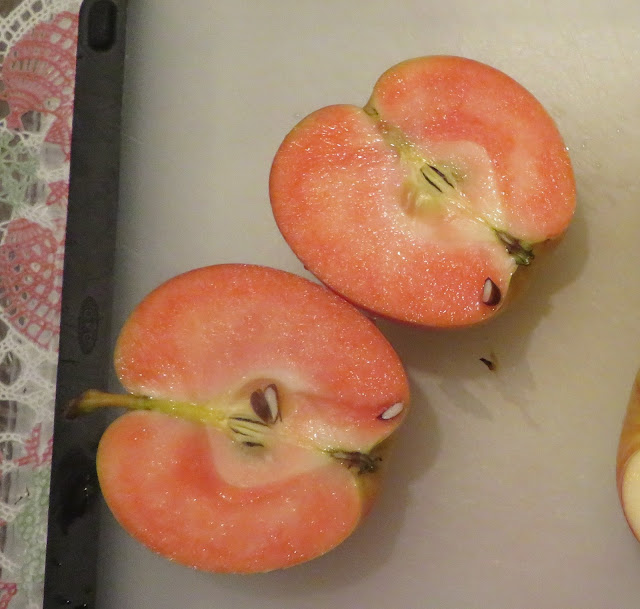
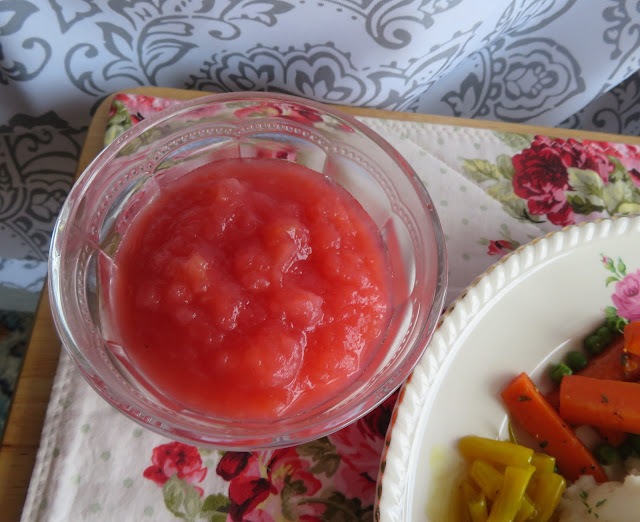
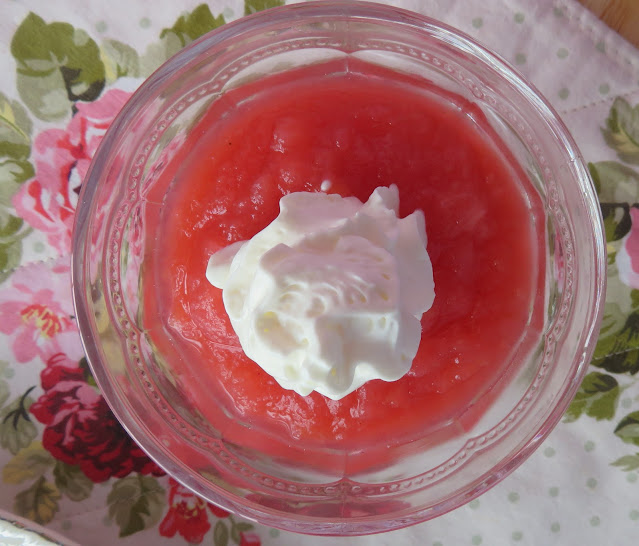
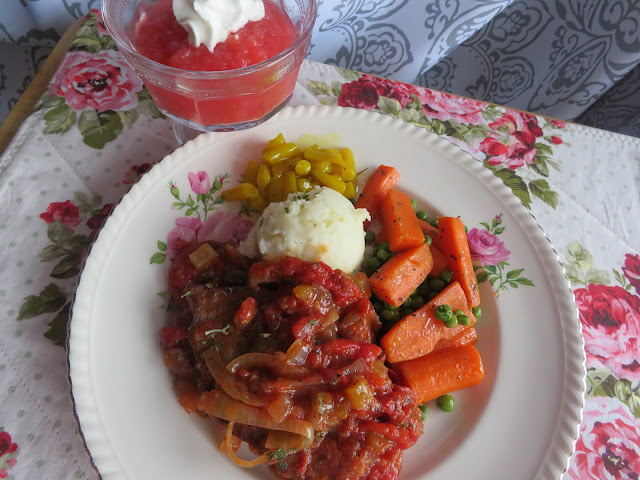






NARCO-TERRORISM: Notorious Mexican cartel now using drones and...
05-02-2024, 01:09 AM in General Discussion